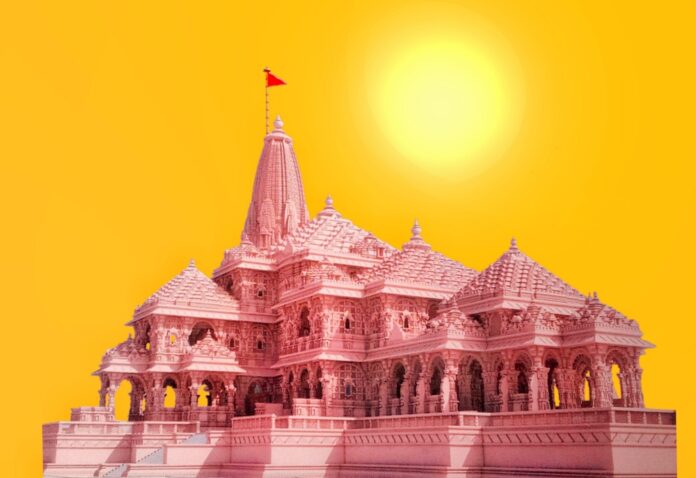Ayodhya History
Ayodhya, the ancient city located in the northern Indian state of Uttar Pradesh. Ayodhya Location holds immense historical and religious significance. The city is renowned for being the birthplace of Lord Rama, a central figure in the Hindu epic Ramayana. One of the most notable landmarks in Ayodhya is the Ram Janmabhoomi, the site believed to be the birthplace of Lord Rama and the focal point of the Ayodhya Ram Mandir controversy. Let’s delve into the rich Ayodhya history and the Ram Mandir.
History of Ayodhya
Ayodhya, also known as Saket, is one of the seven sacred cities of the Hindus. It is believed to have been founded by Manu, the progenitor of humankind in Hindu mythology. Ayodhya served as the capital of the ancient Kosala Kingdom, which was ruled by several dynasties, including the Ikshvakus, the Sungas, the Kushans, and the Guptas.
Ayodhya in the Ramayana
The Ram Janmabhoomi
The Ram Janmabhoomi is believed to be the spot where Lord Rama was born. According to Hindu tradition, a temple dedicated to Lord Rama stood at the site of the Ram Janmabhoomi for centuries. However, the temple was destroyed and replaced by a mosque, known as the Babri Masjid, in the 16th century during the rule of the Mughal emperor Babur.
Ayodhya Ram Mandir Controversy
The Ayodhya Ram Mandir controversy is one of the most contentious and polarizing issues in Indian history, rooted in a complex interplay of religion, politics, and historical narratives. At the heart of the controversy lies the Babri Masjid-Ram Janmabhoomi dispute, which revolves around the claim over the site in Ayodhya, Uttar Pradesh, where a mosque, the Babri Masjid, stood until its demolition in 1992.
Historical Background:
- The dispute dates back to the 16th century when the Mughal emperor Babur constructed the Babri Masjid at the site believed by Hindus to be the birthplace of Lord Rama.
- Over the centuries, the site became a focal point of Hindu-Muslim tensions, with both communities claiming ownership.
Legal Disputes:
- The Ayodhya Babri Masjid history legal battle over the site began in the 19th century during British colonial rule when both Hindu and Muslim groups filed lawsuits claiming ownership.
- The case went through various legal phases, with each side presenting historical, archaeological, and religious evidence to support their claim.
Demolition of the Babri Masjid:
- The dispute escalated on December 6, 1992, when a large mob of Hindu activists demolished the Babri Masjid, claiming that it was built on the ruins of a Hindu temple.
- The demolition sparked widespread communal riots across India, resulting in significant loss of life and property.
Ram Janmabhoomi-Babri Masjid Case:
- The legal battle continued in the Indian courts, leading to the formation of the Ayodhya mediation panel in 2019 to explore an out-of-court settlement.
- In November 2019, the Supreme Court of India delivered a landmark judgment, ruling in favor of the construction of a Hindu temple at the disputed site and ordering the allocation of an alternative piece of land for the construction of a mosque.
The Ayodhya Ram Mandir controversy is a complex and sensitive issue that has deeply impacted Indian society and politics. While the construction of the Ram Mandir has brought closure to a decades-long dispute for Hindus, efforts towards reconciliation and healing remain crucial to ensure lasting peace and harmony among India’s diverse communities.
Legal Battle and Verdict
The dispute was taken up in the Indian courts, and after years of legal battles, the Supreme Court of India delivered a landmark judgment in November 2019. The court ruled in favor of the construction of a Hindu temple at the site, while also ordering the allocation of an alternative piece of land for the construction of a mosque.
Construction of the Ram Mandir
Following the Supreme Court’s verdict, the construction of the Ram Mandir began in August 2020. The temple is being built with the support of millions of devotees and is expected to become a symbol of Hindu faith and cultural heritage.
Conclusion
Ayodhya history is deeply intertwined with the epic of Ramayana and the reverence for Lord Rama. The construction of the Ram Mandir in Ayodhya is not just a religious event but also a cultural and historical milestone for millions of Hindus around the world. It stands as a testament to the enduring legacy of Lord Rama and the city of Ayodhya as a symbol of faith and devotion.






